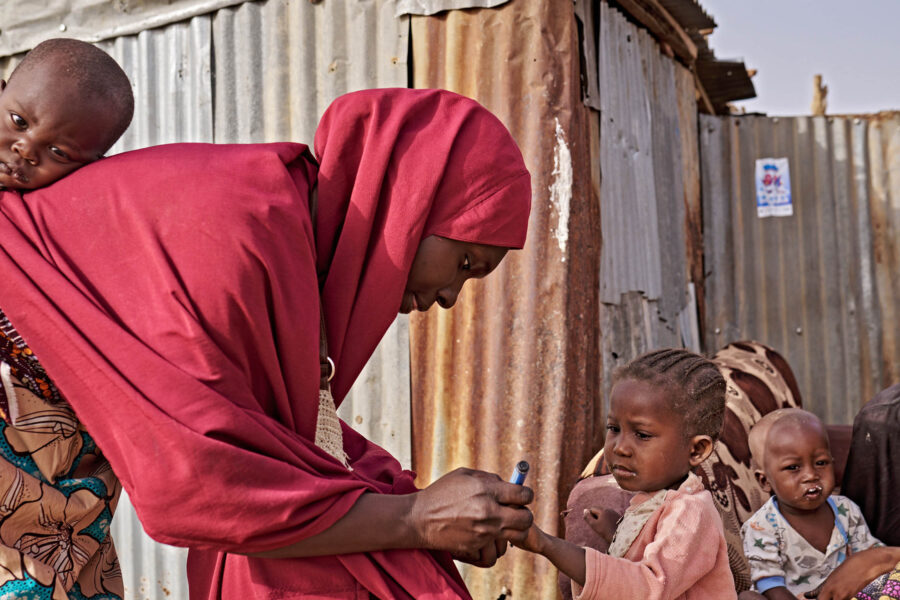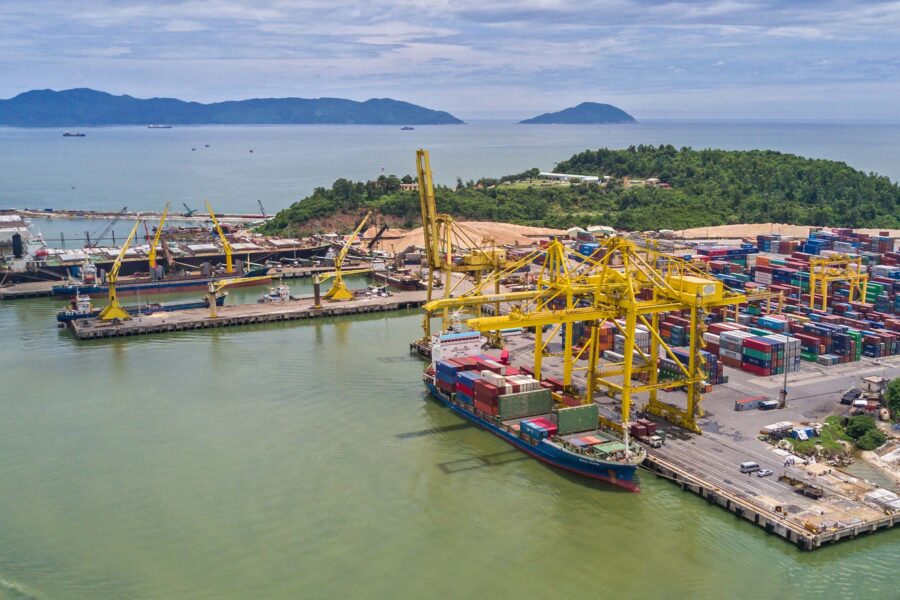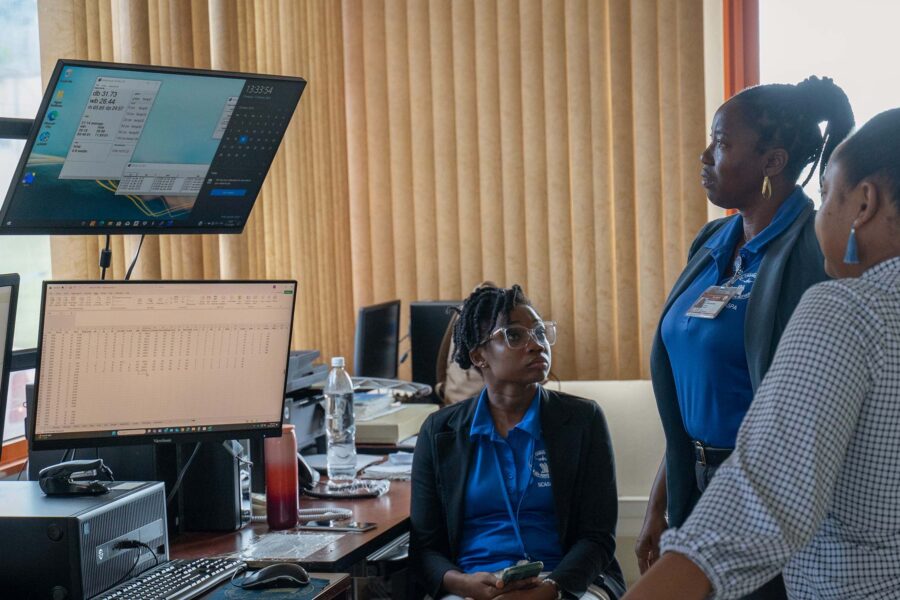Ideas into action
At this mid-point to the 2030 deadline, it’s clear that action must ramp up massively if the SDGs are to be realized and climate catastrophe averted. Initiatives such as the UN SDSN Global Climate Hub can help get governments back on track
Climate — Global

The year 2015 saw the birth of Agenda 2030 and the Sustainable Development Goals (SDGs). Seven years later, as the global agenda approaches the halfway point to its 2030 horizon, it is looking less and less likely that the SDG targets will be achieved globally within the allotted timeframe. In the aftermath of the COVID-19 pandemic and multiple geopolitical crises, 2022 marks the second year in a row without any progress being made on the SDGs. Some countries are even witnessing a regression on achievement against the SDGs on poverty and economic growth, as well as on inclusiveness and environmental quality.
As things stand, achieving the SDGs by 2030 seems out of reach. Experts suggest it will be impossible to attain the Goals with the current rate of investment, and that things need to change. Some predictions, like those in the Social Progress Index, put the timeline on achieving the SDGs as late as 2092. Drastic action is needed to get the world back on track, including:
- integrating the SDGs across business
- developing a global plan to finance the SDGs
- leveraging post-pandemic data innovations and novel partnerships
- crucially, recognizing how the SDGs work as an indivisible system
- looking for cross-sectoral synergies using the six SDG Transformations as a foundational framework
Since its launch in 2021 as part of the UN’s Decade of Action, SDG Action has aimed to encourage cross-sector dialogue and problem-solving to accelerate the transition to sustainability and the achievement of the SDGs. As a natural progression to this “Action,” the UN SDSN Global Climate Hub (GCH) has been launched to support governments in their journey towards achieving their SDG targets. The hub provides an advisory service backed by state-of-the-art science and technology from leading minds in the fields of climate, data and informatics, innovation, economics and finance, policy, health, stakeholder engagement, and nexus thinking.
The GCH is an SDSN Thematic Network that includes the expertise and talent of individuals and members of the SDSN Network. It aims to provide science-based recommendations for combating the climate crisis and preventing further deterioration. It does this by developing and implementing country-specific action plans. These include solution pathways that incorporate:
- existing technologies
- the circular economy
- nature-based solutions
- digitalization
- commercializing innovation
- sustainable finance and adaptation investment schemes
- policy reforms
The GCH goes beyond traditional modeling by adopting a holistic, multi-module approach that integrates various sector-specific models and SDSN data sets using a combination of quantitative and qualitative methodologies. It utilizes a system dynamics framework to address not only adaptation but also mitigation in the context of the six SDG Transformations to generate technical, financial, and policy solutions.
The GCH is made up of nine thematic units (see below) that work synchronously to provide a holistic overview of multi-scale phenomena. Together, they take into consideration the biophysical aspects of sustainability including environmental variables, climate models, nature, and biodiversity. They also consider the anthropocentric dimensions, such as governance, human sentiment, equity, physical and mental well-being, and social health.
- The Climate Data Platforms and Digital Applications Unit aims to aggregate, connect, and visualize data relevant for all units of the GCH to better understand the science, technology, and innovation landscape in the context of the SDGs. The aim is to monitor and enhance polices, practices, and uptake while identifying efforts to build synergies.
- The Atmospheric Physics and Climatology Unit will focus on analyzing global and regional climate trends, extreme events, and their impact at various timescales, to develop adaptation and mitigation strategies.
- Building on this work, the Climate and Energy Systems Modeling Unit will use system dynamics and stochastic modeling techniques to develop decarbonization pathways of the energy system at the national level. It will utilize scenarios that take into consideration energy supply, demand, greenhouse gas emissions, and various climate solutions.
- The Climate, Land Use, Water-Food-Energy-Biodiversity Nexus Modeling Unit (working with unit 3) will consider the relevance of land use dynamics and changes in land use and water management on various scales (from continents to river basins). It will assess the effect of these dynamics on climate change by translating them to an associated temperature increase.
- The Climate and Health Unit will build microclimate health assessment tools that include integrated statistical models to provide correlations between health and climate. This will support knowledge generation to facilitate the reduction of the negative effects of climate change on health.
- The Innovation Acceleration for Climate Neutrality and Resilience Unit aims to bring together the disruptive technologies and breakthrough social innovations from the EIT Climate-KIC Hub in Greece, the MENA Maritime Accelerator, and BRIGAID Connect. It will support the pathways identified within the other units and accelerate the transition to a green economy and society.
- Complimentarily to the innovation unit, the Just Transition: Policies, Finance, Labor Market Unit seeks to drive socially fair, high-level, political engagement structured around the six SDG Transformations. It will identify and promote global adaptation pathways that include everyone and leave no one behind – applying these pathways to all continents at national and subnational level.
- To achieve this, the Transformative Participatory Approaches: National Living Labs and Systems Innovation Unit will leverage the SDSN’s network of stakeholders to convene Living Labs. These will provide an arena for change agents to systematically deep-dive into the national climate change issues from a holistic perspective. They will co-develop innovation pathways (technological, social, financial, and policy) that are appropriate and fit for purpose within the local context.
- Finally, underpinning the activities of all the other units is the Training, Upskilling and Reskilling Unit. This aims to support the green transition by educating and training people and building skills ecosystems aligned with national, regional, local, and sectoral green strategies. Its educational programs will be delivered under six themes corresponding to the six SDG Transformations.
The GCH will provide a focal point for the global community of climate actors. It will serve to bridge the gap between the models it produces and the non-scientific community to provide useful tools for policymakers. The hub will equip policymakers with the evidence-based support they need to facilitate the development of technological, financial, and policy pathways toward achieving their climate action goals. Through this, it will bring them back on track to attain the SDGs.
This mid-point to 2030 is as good a time as any to take stock and seek fresh inspiration to drive us collectively towards the Global Goals. This edition of SDG Action does just that. It re-imagines what a net-zero future could look like, before examining the global shifts required to bridge the gaps between that future and our present. Finally, it finishes with a call to action from voices around the globe, to inspire us all to take action now.





